
A Tonoplast Calcineurin B-Like Protein and Stomatal Movement
Plant Physiology, Plant Physiology: On The InsideSNAREs (soluble N-ethylmaleimide-sensitive factor attachment protein receptors) comprise a highly conserved superfamily of proteins in all eukaryotic cells and play important roles in membrane fusion events involved in the delivery of membranes, proteins, and soluble cargos. SNARES form a core complex…

Systems Biology of Deetiolation
Plant Physiology, Plant Physiology: On The InsideUpon exposure to light, many leaf and stem cells acquire photosynthetic competence by converting pale etioplasts into green chloroplasts. Deetiolation involves the concerted and synchronized activity of a highly complex biogenesis program. Thylakoid membranes must develop from disassembling prolamellar…
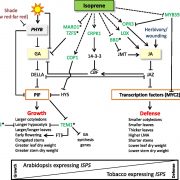
Effects of Isoprene on Plant Growth
Plant Physiology, Plant Physiology: On The InsideAbiotic stress conditions such as drought and salt stress increase isoprene synthesis and emission in many plant species. The carbon and energy cost of isoprene production has been found to vary depending on the plant species and environmental conditions. For example, trees that normally produce isoprene,…
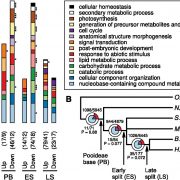
Evolution of Frost Tolerance in the Pooideae
Plant Physiology, Plant Physiology: On The InsideFrost is one of the most severe abiotic stresses a plant can experience, and exposure to frost is a limiting factor for many species in temperate and arctic regions. Only a few ancestrally tropical angiosperm lineages have managed to colonize temperate biomes. Although the grass subfamily Pooideae…

Screening for Blockers of Plant Calcium Channels
Plant Physiology, Plant Physiology: On The InsideThe importance of Ca2+ in animal physiology led to the development of an extensive pharmacological toolbox to manipulate specific groups of Ca2+ channels. Simple drug treatments allow for the manipulation of specific Ca2+ channels, thereby providing insights of which Ca2+ channels are involved in any…
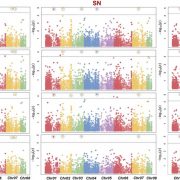
ABC Transporter Gene Enhances Chickpea Yield
Plant Physiology, Plant Physiology: On The InsideThe development of crop cultivars with increased seed number or seed size and weight (SW) is critical for ensuring global food and nutritional security. Because of the importance of SW, substantial efforts have been directed towards identifying genetic factors regulating this yield-contributing trait.…

Serving and SURFing at ASPB: Reflections on 35 years with ASPB
Blog0 Comments
/
Guest post by Jonathan Monroe
ASPB has been a big part of my professional life since I first joined in about 1984 as a graduate student at Cornell. One early memory of attending ASPP (former name) meetings was making posters by spray-mounting printed paper onto colored cardboard and trimming the…
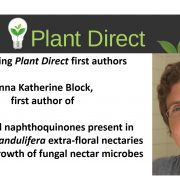
Recognizing Plant Direct first authors: Anna Katherine Block
Plant Direct, Plant Direct: Author ProfilesAnna Katherine Block, first author of Specialized naphthoquinones present in Impatiens glandulifera extra-floral nectaries inhibit the growth of fungal nectar microbes
Current Position: Research Molecular Biologist, Chemistry Research Unit at the Center for Medical, Agricultural and Veterinary Entomology…
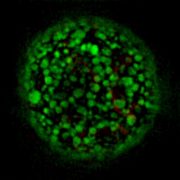
A Reversible Switch for Algal Photosynthesis
Research, The Plant Cell, The Plant Cell: In a NutshellRoth et al. investigate how a green alga turns photosynthesis off and on when glucose is added and then removed from the culture medium. Plant Cell https://doi.org/10.1105/tpc.18.00742
By Melissa Roth and Krishna Niyogi, University of California-Berkeley
Background: Photosynthesis is the life-sustaining…

